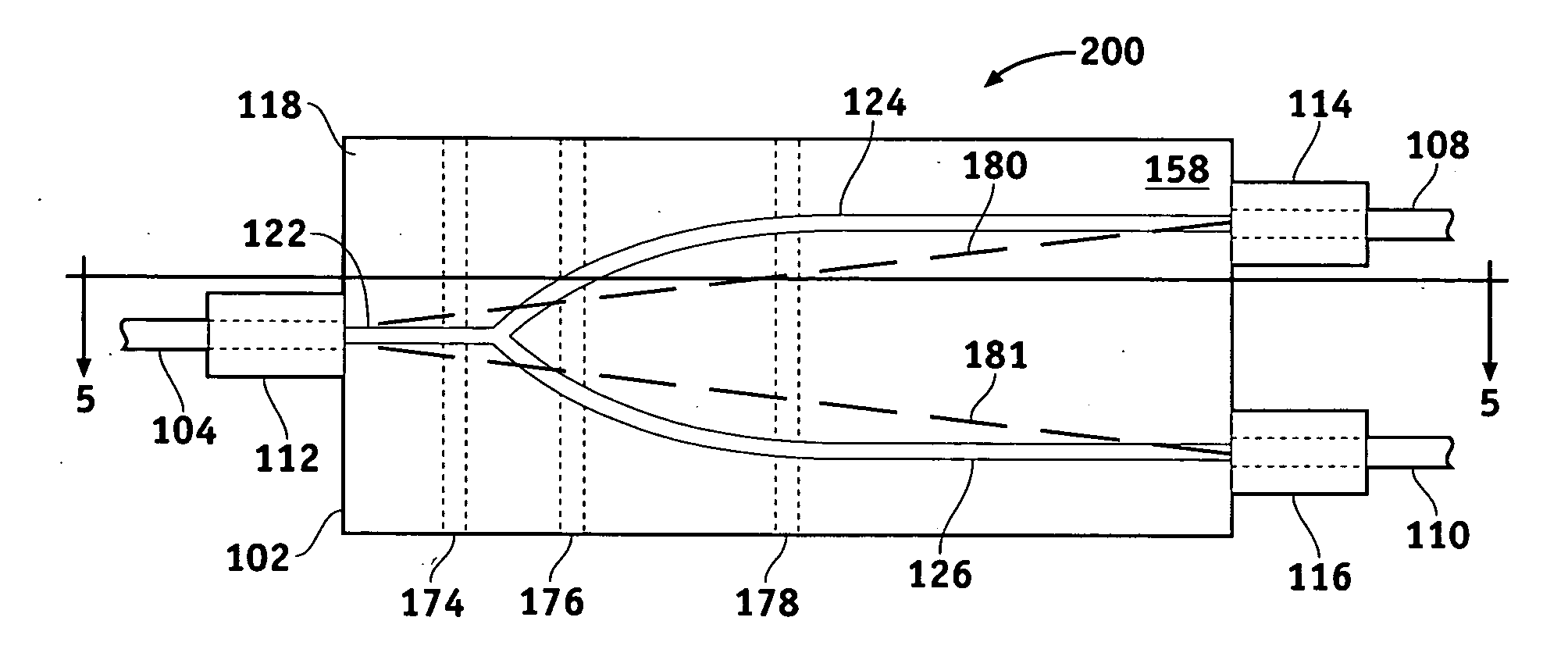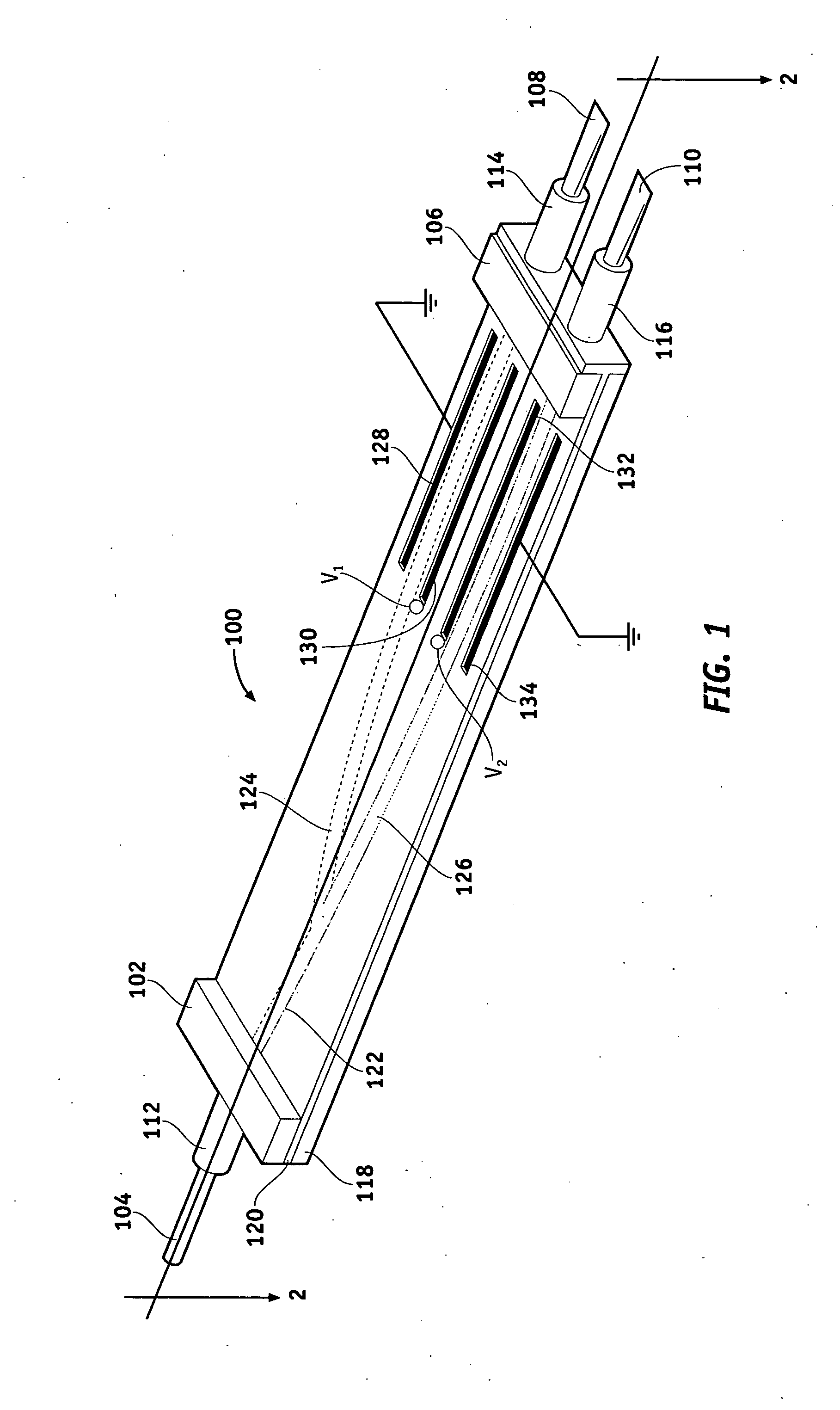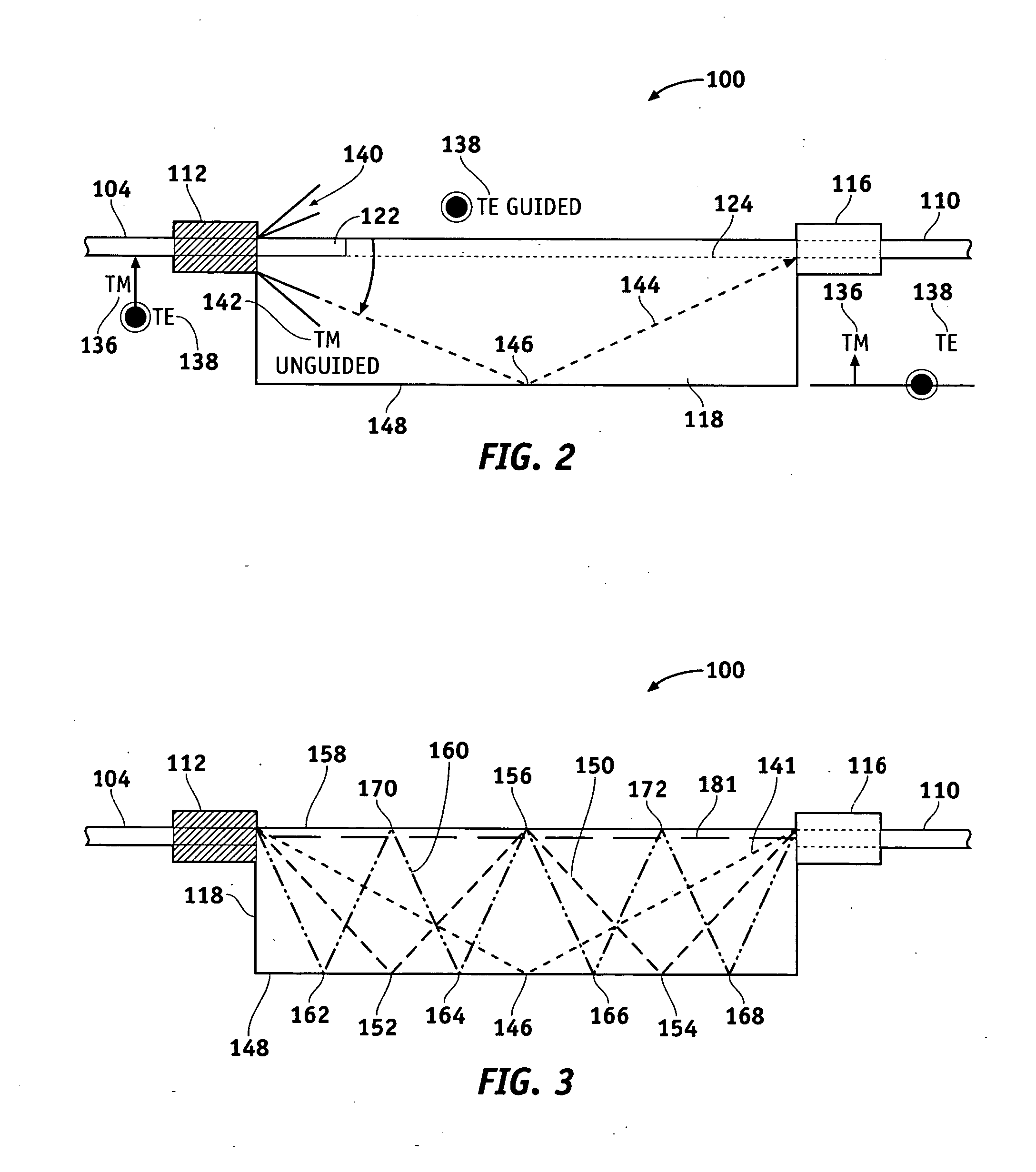Waveguide device having improved spatial filter configurations
a waveguide and spatial filter technology, applied in the field of electronic waveguide devices, can solve the problems of only two optical paths (i.e., primary and secondary paths) traveled by unguided light, affecting the desired optical signal, and limiting the number of obstructed light paths
- Summary
- Abstract
- Description
- Claims
- Application Information
AI Technical Summary
Problems solved by technology
Method used
Image
Examples
first embodiment
[0026]FIGS. 4-6 illustrate the present invention; i.e., an optical modulator 200 wherein three baffles 174, 176, and 178 having substantially rectangular cross-sections are provided within substrate 118 at different locations along bottom surface 148. In particular, FIGS. 4, 5, and 6 are a top view, a side cross-sectional view taken along line 5-5 of FIG. 4, and a bottom view of modulator 200, respectively. Referring FIGS. 4-6, assuming substrate 118 has a length of X, baffles 174, 176, and 178 may be disposed approximately distances (⅛)X, (¼)X, and (½)X, respectively, from first end 102 of substrate 118. Described another way, baffles 174, 176, and 178 are positioned proximate respective transverse reflection points 162, 152, and 146 discussed above in conjunction with FIG. 3. As FIG. 5 illustrates, by positioning baffles 174, 176, and 178 in this manner, this embodiment of modulator 200 substantially blocks the primary, secondary, and tertiary reflection optical paths 174, 176, an...
second embodiment
[0027]FIGS. 7-9 are a top, side cross-sectional (taken along line 8-8 of FIG. 7), and bottom views, respectively, of the present invention. In optical modulator 210, two baffles 212 and 214 having a substantially rectangular cross-section are provided within substrate 118 along bottom surface 148. In addition, two narrow baffles 216 and 218 having saw-tooth cross-sections are provided within substrate 118 along upper surface 158. As may be appreciated by comparing FIGS. 7-9 to FIGS. 4-6, baffles 212 and 214 are disposed within optical modulator 200 in substantially the same position as are baffles 176 and 178 within optical modulator 210 and thus substantially block optical paths 150 and 144, respectively, as described above. In contrast to modulator 200, however, optical path 160 is substantially blocked by narrow baffles 216 and 218 (FIG. 8). In addition, narrow baffles 216 and 218 substantially block direct optical paths 180 and 181 (FIGS. 7 and 8). If substrate 118 has a length ...
third embodiment
[0028]FIGS. 10-12 are top, side cross-sectional (taken along line 11-11 of FIG. 10), and bottom views, respectively, of the present invention. In optical modulator 220, a first baffle 222 having a substantially rectangular cross-section is provided within substrate 118 proximate bottom surface 148, and a second baffle 224 is provided within substrate 118 proximate upper surface 158. Longitudinally, baffles 222 and 224 are each positioned at approximately the middle region of substrate 118. Baffle 224 is disposed so as to block the optical paths traveling directly from inlet fiber 104 to outlet fibers 108 and 110 (i.e., optical paths 180 and 181) in addition to optical reflection paths 150 and 160. Baffle 222 is disposed so as to block optical path 144 in the manner described above. It should thus be appreciated that the embodiment shown in FIGS. 10-12 is configured to impede or block substantially all of the major optical paths along which unguided light may travel (i.e., the primar...
PUM
 Login to View More
Login to View More Abstract
Description
Claims
Application Information
 Login to View More
Login to View More - R&D
- Intellectual Property
- Life Sciences
- Materials
- Tech Scout
- Unparalleled Data Quality
- Higher Quality Content
- 60% Fewer Hallucinations
Browse by: Latest US Patents, China's latest patents, Technical Efficacy Thesaurus, Application Domain, Technology Topic, Popular Technical Reports.
© 2025 PatSnap. All rights reserved.Legal|Privacy policy|Modern Slavery Act Transparency Statement|Sitemap|About US| Contact US: help@patsnap.com



